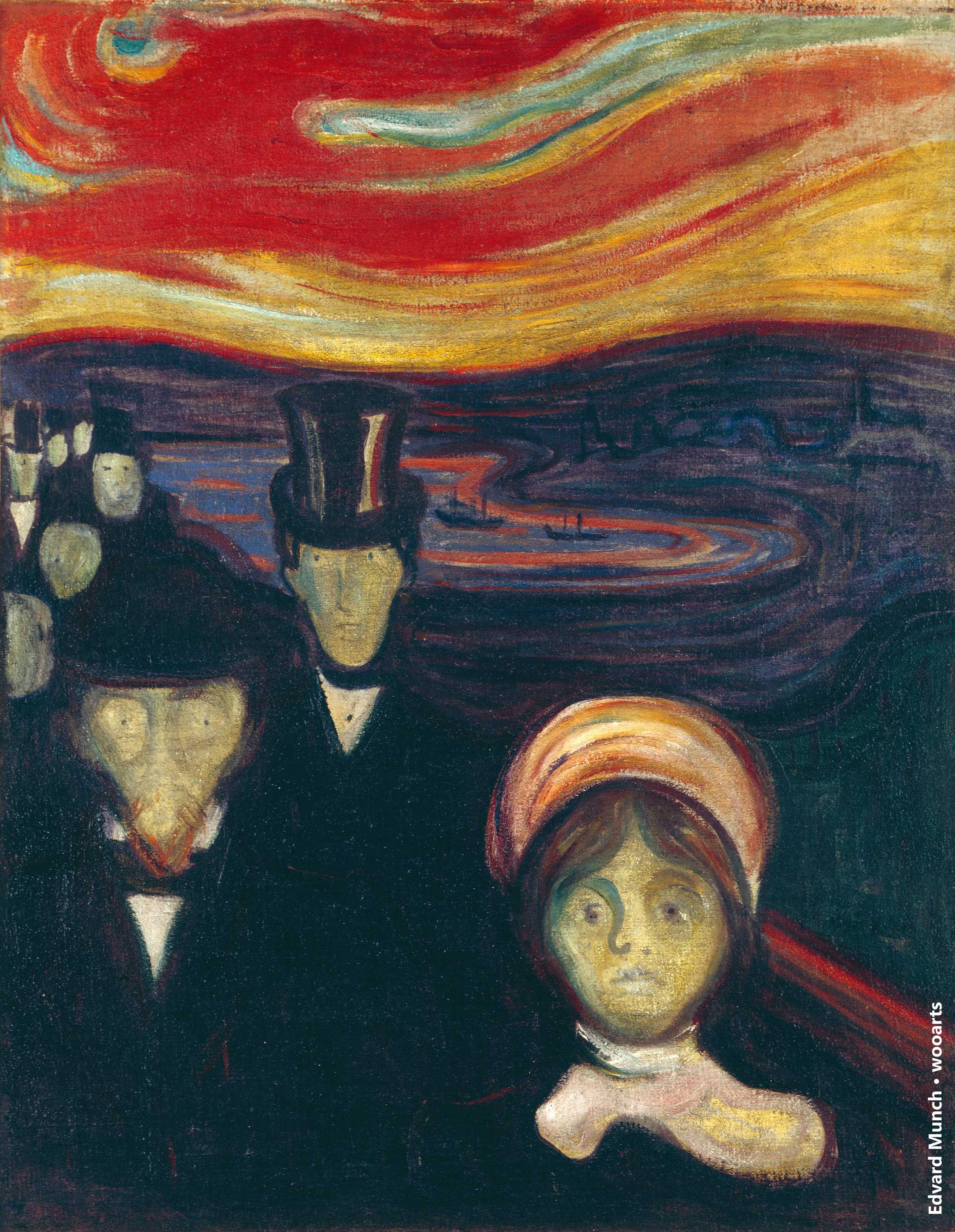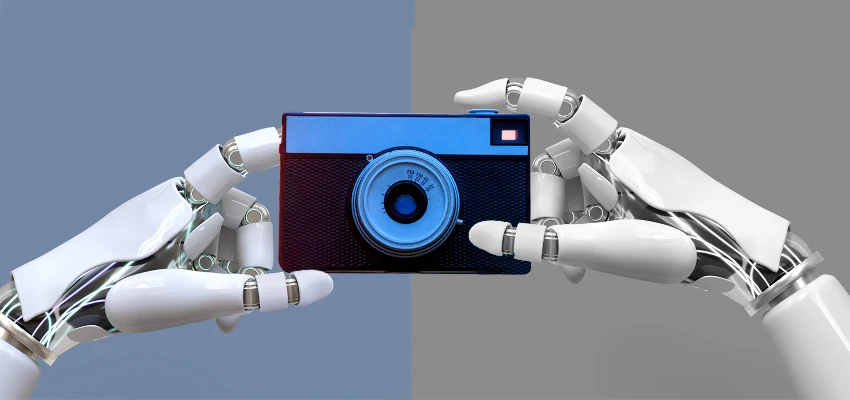Edvard Munch, a luminary in the world of Modernist art, is best known for his evocative works that delve into the complexities of emotional human experiences. One of his most profound pieces, “Two Human Beings (The Lonely Ones),” created between 1906 and 1908, can be seen at the Harvard Art Museums, showcasing Munch’s remarkable ability to capture isolation and interpersonal connections through his vivid art motifs. This acclaimed painting, depicting a man and woman standing apart yet linked by their shared gaze toward the sea, poses essential questions regarding human relationships and emotional states. The current Munch exhibition at Harvard invites visitors to engage deeply with such themes and consider Munch’s enduring legacy in contemporary art. With careful exploration of his work, one can appreciate how Munch’s artistic journey mirrors the struggle between solitude and companionship, making him a pivotal figure in the study of modern artistic expression.
The captivating narrative of Edvard Munch extends beyond just his singular works like “The Scream” to encompass a broader exploration of human emotions captured in various forms. His engagement with subjects such as companionship and loneliness is profoundly explored through the art piece “Two Human Beings (The Lonely Ones),” which is currently part of an exhibition at the Harvard Art Museums. This Modernist artist’s legacy not only includes stunning paintings but also intricate prints that illustrate his obsessive scrutiny of human relationships and emotional depth. As the Munch exhibition unfolds, viewers are invited to reconsider their perceptions of Munch’s masterpieces, moving past purely psychological interpretations toward a recognition of his technical prowess and innovative techniques. This fresh perspective aligns well with the trending discussion about art’s role in reflecting societal and personal narratives, making Munch both a subject of interest and a seminal influence in art history.
Understanding Edvard Munch’s ‘Two Human Beings’ Motif
Edvard Munch’s ‘Two Human Beings (The Lonely Ones)’ stands as one of the most pivotal motifs in his oeuvre, encapsulating themes of connection and isolation. Painted between 1906 and 1908, this work offers a glimpse into Munch’s artistic evolution over a span of 40 years. The simplicity of the imagery—a man and a woman standing side by side, gazing into the vastness of the sea—belies the complexity of emotions that the figures embody. The repeated exploration of this motif illustrates Munch’s dedication to dissecting the human condition, ultimately reflecting audiences’ own experiences in contemporary society.
Throughout his career, Munch revisited this iconic scene in various forms and techniques, from oil paintings to woodcuts and prints. Each iteration features unique properties, such as alterations in color, technique, or composition, demonstrating his relentless quest for deeper understanding not just of the figures, but of the relationships they symbolize. Art critics at the Harvard Art Museums have noted how these variations contribute to an evolving narrative that extends beyond loneliness, hinting at themes of companionship and introspection. As visitors engage with these pieces in the exhibition, they are invited to ponder the significance behind Munch’s artistic choices and what they reveal about societal views on relationships.
Companionship vs. Isolation in Munch’s Art
At first glance, Munch’s ‘Two Human Beings’ has often been interpreted through a lens of isolation, suggesting a profound disconnection even in proximity. However, deeper analyses by art historians reveal that Munch’s depictions may also evoke companionship and shared experience. The figures’ orientation towards each other and the landscape suggests a bond forged through shared contemplation of their surroundings. As Munch played with color dynamics and composition, he transformed the narrative from one of alienation to that of a quiet, shared understanding between the figures.
This duality within Munch’s work underscores his methodical approach to exploring human emotion, which resonates strongly in contemporary discourse around relationships. As the co-curators of the exhibition at Harvard point out, Munch remained anchored in the belief that art could communicate the nuanced complexities of human interactions beyond mere aesthetics. The invitation to reconsider interpretations of loneliness versus companionship encourages a broader conversation about intimacy, reflection, and the shared human experience, making Munch’s work as relevant today as it was over a century ago.
An Exploration of Munch’s Techniques
Munch’s innovative use of various techniques in his prints and paintings reflects his desire to experiment with the emotional resonance of his subjects. Unlike traditional methods that often favor precision and polish, Munch embraced unfinished qualities and visible imperfections, using them to amplify the emotional impact of his work. This dynamic interplay between chaos and control can be seen in ‘Two Human Beings,’ where sought-after refinement contrasts boldly with raw brushstrokes and exposed lines, inviting viewers to engage with the artwork on a visceral level.
The artist’s fascination with the intersection of different media allowed him to reinterpret the same motif through fresh lenses. By employing mixed techniques in his prints—where elements could be reassembled in unexpected ways—he pushed the boundaries of visual representation. Each of these variations offered Munch a new avenue to articulate underlying themes at the same time they introduced his audience to the physicality of his art processes. Observers of the exhibition can appreciate not just the final products but also the artistic journey Munch underwent, revealing a process as integral to the appreciation of art as the artwork itself.
Thematic Resonance of ‘The Lonely Ones’ in Modern Culture
Munch’s ‘Two Human Beings’ continues to resonate deeply with modern audiences, particularly as discussions around mental health and human connection have gained prominence in recent years. The image of two figures facing the tumultuous sea speaks to feelings of uncertainty and unease that many experience today. Critics are discovering new interpretations of the work, suggesting that it mirrors contemporary anxieties while simultaneously offering a sense of comfort through shared solitude.
Moreover, Munch’s rejection of traditional artistic conventions encourages a re-examination of what constitutes beauty and emotional truth in art. In an era that increasingly values authenticity over perfection, his willingness to expose the vulnerabilities of human emotion aligns with today’s artistic principles. As scholars and curators highlight these connections in exhibitions, Munch’s motifs take on layered meanings, inviting new generations to reflect on their personal interpretations and engage with timeless themes.
Munch’s Artistic Legacy in Printmaking
As a Modernist artist, Edvard Munch brought innovation to printmaking that transformed the medium itself. His technique of jigsaw printmaking—cutting individual elements of the composition from woodblocks—allowed for considerable variation, creating a layered quality that enhances emotional depth. This method establishes a captivating dialogue between each impression of ‘Two Human Beings.’ Every print represents a unique moment in Munch’s exploration of the motif, reinforcing the notion that art can be continuously reinterpreted through the lens of time.
Furthermore, Munch’s integration of expressive styles found in his paintings into printmaking broke down barriers between disciplines, enabling him to convey complex emotions in diverse forms. This cross-pollination of techniques illustrates the rich textures of emotional experiences, demonstrating why Munch remains an essential figure for students and enthusiasts alike. The Harvard Art Museums’ exhibition acts as a vital touchpoint for appreciating the significance of Munch’s impact on printmaking, encouraging a timeless appreciation for the mastery of this complex medium.
The Evolution of ‘Two Human Beings’ Through Munch’s Timeline
Munch’s ‘Two Human Beings’ reflects his evolving artistic exploration from the late 19th century into the mid-20th century. Initially conceptualized in 1892, the motif gained prominence as Munch navigated through various artistic movements and personal experiences, including themes of love, loss, and existential contemplation. The reintroduction of this motif during different periods not only illustrates Munch’s growth as an artist but also allows observers to trace how broader societal shifts influenced his work.
The inclusion of several iterations of ‘Two Human Beings’ in the current exhibition further emphasizes this journey through time. Art historians have pointed out how each version encapsulates Munch’s experimentation with emotional and stylistic elements that speak to specific moments within his life and career. As visitors observe these developments, they can reflect on the ways in which art adapts and transforms alongside the artist, revealing an enduring connection between the creator’s intentions and the audience’s interpretations.
Artistic Symbolism in Munch’s Works
Munch’s artwork is imbued with rich symbolism that communicates profound themes. In ‘Two Human Beings,’ the lone figures can be seen as representations of human relationships that are at once intimate yet solitary. The shoreline acts as both a barrier and a bridge, symbolizing the fragile connections between individuals. Such motifs foster a dialogue about the unseen threads that link people, inspiring discussions about emotional attachment, existence, and the nature of human experience.
The dynamic layers of symbolism in Munch’s compositions have led to varied interpretations over the years. Scholars highlight the significance of color choices and figures’ postures, recognizing how they inform viewers’ emotional responses. For many, these elements stimulate a deeper exploration of what it means to be human amid the chaotic experiences of life. Munch’s deliberate crafting of symbols within ‘Two Human Beings’ encourages reflection on both the solitude of existence and the potential for connection, making his work profoundly relevant across time.
Munch’s Influence on Modern Artistic Practices
Edvard Munch’s innovative approaches have left an indelible mark on the contemporary art landscape. His unorthodox styles and emotional depth have inspired countless modern artists, prompting them to explore raw human emotions through various mediums. Munch’s willingness to embrace imperfection and visceral expression resonates with today’s movements that prioritize individuality and authenticity.
As modern artists experiment with themes of isolation and companionship, Munch’s legacy as a Modernist artist remains a guiding influence. His ability to encapsulate complex emotional states within simple forms serves as a powerful reminder of the artist’s role in society. In exhibitions like ‘Edvard Munch: Technically Speaking’ at the Harvard Art Museums, the enduring impact of his work is highlighted—encouraging new interpretations and dialogues about art’s capacity to reflect and shape the human experience.
Interdisciplinary Perspectives on Munch’s ‘Two Human Beings’
Engagement with Edvard Munch’s ‘Two Human Beings’ invites interdisciplinary exploration that spans art history, psychology, and sociology. By examining the work through multiple lenses, the complexity of human emotion expressed in art becomes clearer; art history can uncover the influences that shaped Munch’s methods, while psychological analysis might expose deeper insights into the emotional states reflected in his figures. Munch’s work raises questions about societal norms and expectations surrounding relationships, contributing to conversations in sociology that remain relevant today.
Furthermore, the exhibition at the Harvard Art Museums exemplifies how interdisciplinary approaches can enrich public understanding of art. Educational programs, discussions, and workshops associated with the exhibition challenge audiences to think critically about the intersection of art, emotion, and society. This holistic engagement not only enhances appreciation for Munch’s mastery but also nurtures a deeper awareness of the broader implications inherent in his representation of human interaction.
Frequently Asked Questions
What is the significance of Edvard Munch’s ‘Two Human Beings’ in his artistic career?
Edvard Munch’s ‘Two Human Beings (The Lonely Ones)’ is significant as it showcases his 40-year obsession with the themes of isolation and companionship. This motif captivated Munch from its first painting in 1892 through numerous iterations, allowing him to explore different techniques and emotional depths, revealing the evolution of his artistry over decades.
How is Edvard Munch’s ‘Two Human Beings’ presented in the current Munch exhibition at Harvard Art Museums?
The current exhibition ‘Edvard Munch: Technically Speaking’ at the Harvard Art Museums features ‘Two Human Beings’ as a focal point, offering insights into Munch’s varied techniques. It displays multiple versions, illustrating the motif’s evolution and Munch’s experimentation with color, composition, and printmaking, enhancing visitors’ understanding of his artistic journey.
What techniques did Edvard Munch use in ‘Two Human Beings’ that reflect his Modernist approach?
In ‘Two Human Beings,’ Edvard Munch utilized a blend of painting techniques, including leaving parts of the canvas unpainted and employing thick paint application. His process reflects a Modernist approach by emphasizing the emotional resonance of his subjects over a polished finish, creating a vibrancy that captures the viewer’s attention and enhances the narrative of isolation and connection.
What themes are explored in Edvard Munch’s repeated depictions of ‘Two Human Beings’?
Edvard Munch’s repeated depictions of ‘Two Human Beings’ explore themes of isolation, companionship, and emotional complexity. While initially perceived as a representation of loneliness, fresh interpretations suggest a deeper connection between the figures, indicating that Munch’s focus might also include companionship and contemplation rather than just despair.
How did Edvard Munch’s background influence his creation of ‘Two Human Beings’?
Edvard Munch’s background as a deeply introspective artist shaped his creation of ‘Two Human Beings.’ Struggling with mental health issues and drawing from personal experiences, Munch infused his art with emotional depth, resulting in motifs like ‘Two Human Beings’ that resonate with universal themes of human connection and solitude.
What are the different variations of ‘Two Human Beings’ exhibited at the Harvard Art Museums?
The Harvard Art Museums exhibit several variations of ‘Two Human Beings’ by Edvard Munch, showcasing works in diverse color palettes, including black and white and psychedelic hues. Each version reveals Munch’s innovative printmaking techniques and artistic exploration, highlighting how slight changes can convey shifting emotions and interpretations of the same motif.
Why is the motif of ‘Two Human Beings’ considered a pivotal part of Edvard Munch’s oeuvre?
The motif of ‘Two Human Beings’ is pivotal in Edvard Munch’s oeuvre as it encapsulates his exploration of human emotions around connection and isolation over time. This repeated theme allows Munch to delve into various artistic interpretations and techniques, making it a significant representation of his evolving style and artistic vision throughout his career.
How does the exhibition ‘Edvard Munch: Technically Speaking’ reinterpret Munch’s relationship with his artwork?
The exhibition ‘Edvard Munch: Technically Speaking’ invites viewers to reinterpret Munch’s relationship with his artwork, emphasizing his artistic processes over his troubled biography. It encourages audiences to see works like ‘Two Human Beings’ as explorations of technique and emotion rather than mere reflections of Munch’s psychological struggles.
| Aspect | Details |
|---|---|
| Artist | Edvard Munch (1863-1944) |
| Key Work | Two Human Beings (The Lonely Ones), 1906–8 |
| Medium | Oil on canvas |
| Exhibition Title | Edvard Munch: Technically Speaking |
| Exhibition Duration | On view through July 27, 2025 |
| Themes | Isolation, companionship, artistic exploration, imperfections |
| Artistic Techniques | Varied painting methods, use of printmaking techniques, emphasis on the dynamic quality of brushwork |
| Interpretations | Initially viewed as symbols of loneliness; later interpretations suggest companionship and connection to landscape |
| Notable Influences | Munch’s psychological state, marketability of art, and material exploration in creating compositions |
Summary
Edvard Munch’s continuous exploration of the motif “Two Human Beings (The Lonely Ones)” underscores his deep introspection and evolving artistic techniques over four decades. This iconic theme reflects not only Munch’s complex relationship with isolation and companionship but also his innovative approach to painting and printmaking. Munch’s dynamic methods, unrefined aesthetics, and the emotional depth captured within his works invite audiences to reconsider the narratives traditionally associated with his art. As the exhibition at Harvard Art Museums reveals, Munch’s legacy transcends personal narrative, emerging as a vibrant exploration of human experience, illuminating how art can articulate both the nuances of solitude and the profound connections between individuals. Through this lens, Munch’s oeuvre remains remarkably relevant, encouraging a multifaceted appreciation of his contribution to Modernist art.











